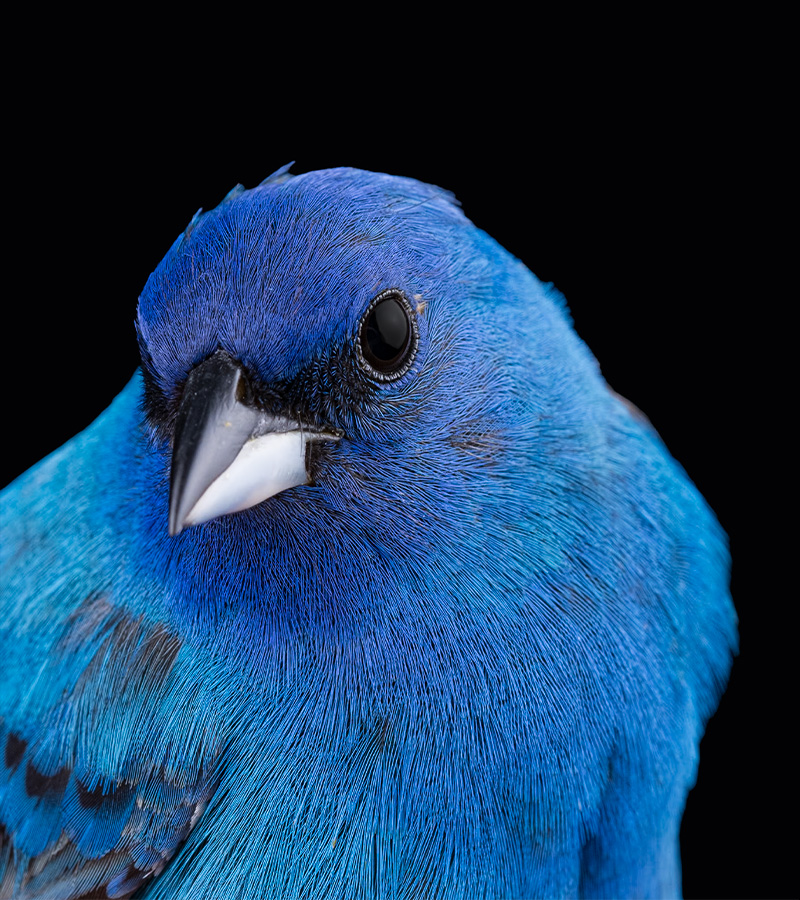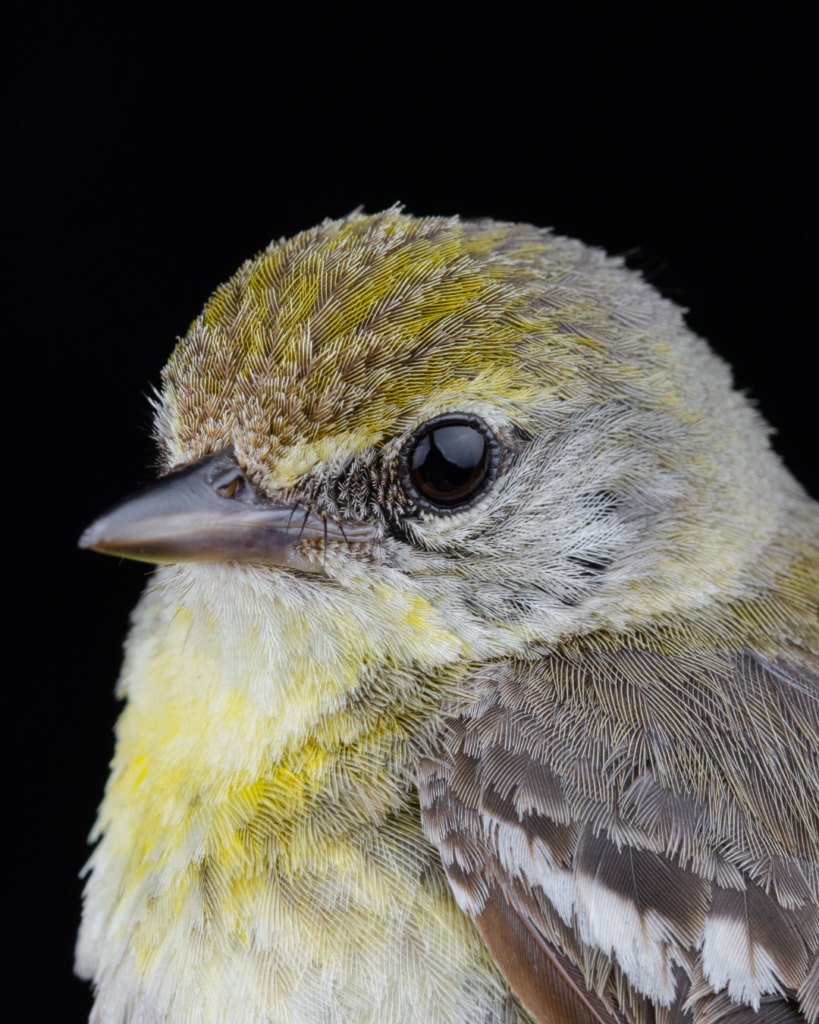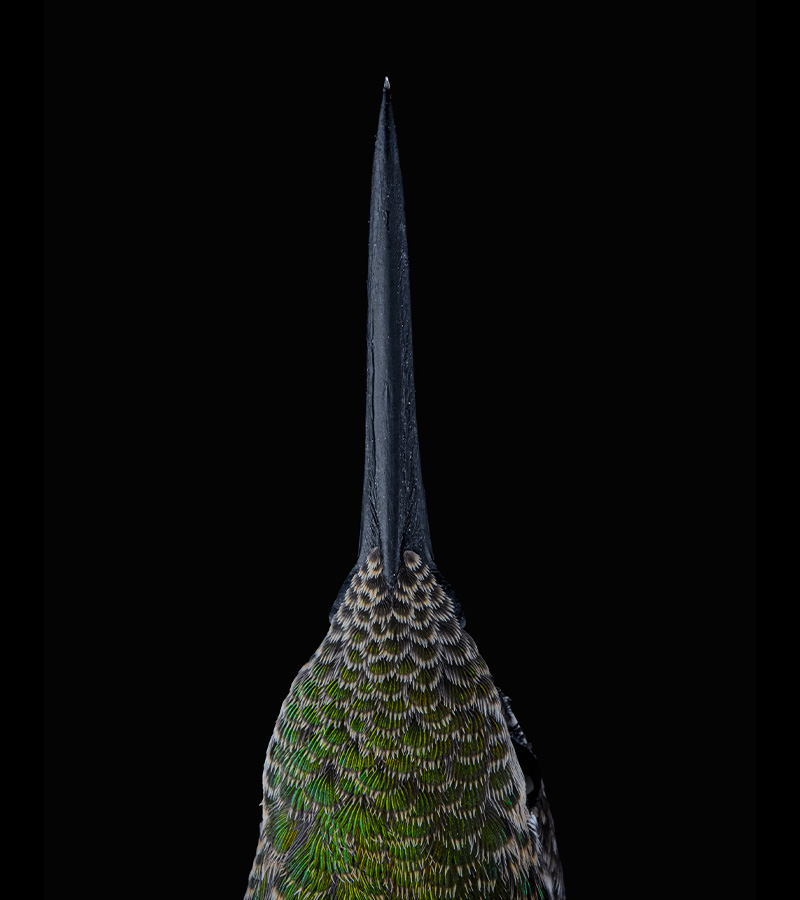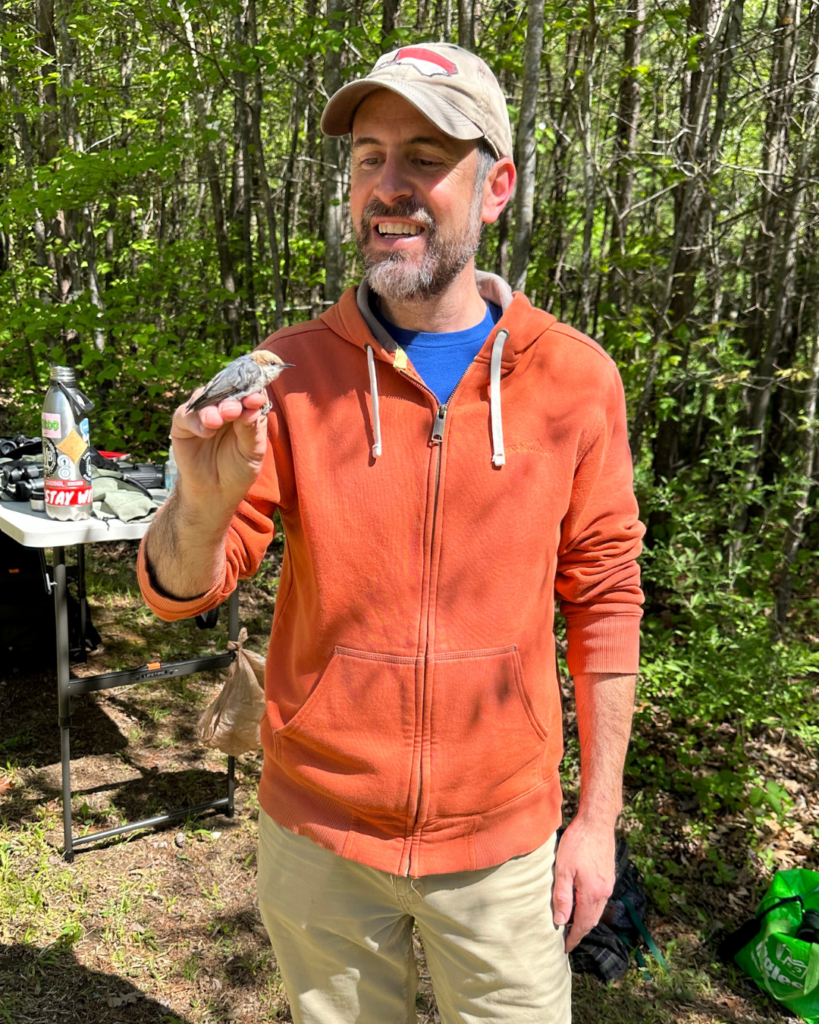For the past six years, Wild Bird Research Group (WBRG), a nonprofit dedicated to avian research, has been running a MAPS (Monitoring Avian Productivity and Survivorship) banding station at The North Carolina Arboretum just south of Asheville. Each summer WBRG has the privilege to work with outstanding avian technicians and volunteers to monitor the flycatchers, warblers, buntings, and other passerines that move through
this richly biodiverse region.
Working from the end of May to the beginning of August, the WBRG crew caught 155 birds during the 2023 summer songbird banding season. 121 of those birds were newly banded and 21 were recaptures, and an impressive 96 individuals (nearly 80%) of the total birds processed were migrants. 2023 was a productive year, by all accounts. Here are five highlights from the season.

A Banner Year for Buntings
In 2023 the crew banded a record five adult breeding Indigo Buntings at the Arboretum, four males and one female. This is more than double the annual total of any other year. It’s particularly interesting because the station is situated in an interior forest setting, which is not typical bunting breeding habitat.

Two Special Warblers
It’s always exciting to get a new species for a banding station, and in 2023 the WBRG crew had two such species at the Arboretum. The first was a second-year female Pine Warbler. It took a minute to determine the species because these young females look very different from adult birds—much drabber gray and significantly less yellow. Pine Warblers are the only year-round warblers at the Arboretum. The crew hears their rapid trills all the time but had never caught one during the breeding season until this bird. Secondly, the team was thrilled to find a Swainson’s Warbler in one of their mist nets. Unlike the Pine Warbler, this species had not been heard singing during the breeding season and therefore was not on anyone’s radar. Swainson’s do breed nearby, and the Arboretum’s riparian forest is suitable habitat; perhaps they are outcompeted by the abundance of Louisiana Waterthrushes, which occupy the same habitat and share similar behavior. At any rate, it was thrilling to encounter this bird, an elusive warbler that summers in the southern United States and winters in the Caribbean and the Yucatán Peninsula.

Hummingbird Closeup
This image shows the bill of a hatch-year female Ruby-throated Hummingbird, one of three individual hummingbirds caught at the Arboretum in 2023. If you look closely at the sides of the bill, you can see scratch marks or what avian researchers call “corrugations.” Banders use the absence or presence of these markings to help determine age, because only young birds have corrugations as the bill is growing in.

Teamwork Makes the Dream Work
The work of WBRG simply could not happen without solid field crews. The team in North Carolina this year included technicians Sarah Hill, Gavin Greenberg, and Aaron Goldfarb; Arboretum staffers Kristin Anderson and Caitlin McBride; seasoned volunteers Clifton Avery, Atley Elliott, Clayton Gibb, Chris Kelly, Andrew Laughlin, and Jennifer Tucker; and station manager Anthony Squitieri. We are immensely grateful for the time and effort of these talented people that make this work possible.
Ending on a High Note
Oftentimes that last net check on the last day of the season produces a fun surprise. This Common Grackle was captured at the very end of the season’s banding operations. It was the first grackle to be banded at the Arboretum since 2019, when a Common Grackle was captured four years ago in the same net (#14). This area of the banding station is a muddy flood zone next to a stream, and so the grackles are probably coming down from the canopy to drink water and forage for invertebrates in the mud. Although a “common” bird, these grackles are truly stunning in
the hand. The iridescence gives an appearance as though the birds have been dipped in oil. A great bird with which to end the season!
This post was written by Kyle Carlsen from Wild Bird Research Group. To learn more about the MAPS program, visit the website of the Institute for Bird Populations at birdpop.org. This article was featured on ncarboretum.org

